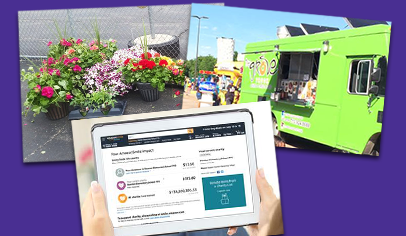Rhayne Evans remembers exactly when she burned out on the school candy bar sale. Because so many school children live in her neighborhood, selling the candy door to door proved difficult. In past years, her husband had taken the candy bars to work, but after a promotion he didn’t want to appear to be coercing employees into buying them.
“I ended up paying $50 for candy bars we all ate, and then I had to go to Weight Watchers,” Evans remembers. “The next year, I wrote a check for $50.”
It’s not that Evans doesn’t support the school—she’s in her third year as PTA president at Spring Garden Elementary in Hampstead, Md. “This area is so inundated with fundraisers,” she explains. “When you’re selling something, it’s really hard if all your neighbors are also doing it.”
She’s far from alone. Most parents who have children in school are asked to support a fundraiser by buying or helping to sell products. In a 2006 survey by the Association of Fund-Raising Distributors and Suppliers, 71 percent of respondents with school-age children sold at least one fundraising product during the previous year. Product fundraising sales netted approximately $1.7 billion in profits for schools, clubs, sports leagues, scouts, and other organizations in 2005. In communities with many groups pitching products, parents may be asked to buy or sell goods so frequently that it’s easy to exhaust volunteers and tap out customers.
Since 2001, net profits for fundraising groups have dropped 11 percent even as fundraising companies have expanded their product offerings. The declining sales could indicate that customers are being approached by too many groups, says Vickie Mabry, associate director at AFRDS.
Crowd Control
In a competitive environment like this, how can a PTO minimize burnout and maximize profits? Parent groups should start by evaluating the effectiveness of their fundraising programs and concentrating on activities that yield the best results, Mabry says.
“Our mantra is ‘Do a few, and do them well,’ ” she says.
At Eberwhite Elementary in Ann Arbor, Mich., fundraising unexpectedly proliferated after a parent in the landscaping business donated a patio reading area to a classroom in 2004. Soon other teachers wanted to have similar areas, and classes were competing to sell popcorn, cookie dough, and pizza kits to raise the $500 to $1,000 needed for each one.
The fundraisers continued through the next two school years, and although the PTO did not sponsor them, it served as a clearinghouse for the funds. With parents being hit up for multiple product sales, they soon tired of the school-related solicitations.
“There really was quite a bit of backlash,” recalls Mark Davis-Craig, an Eberwhite parent and chairman of the Ann Arbor PTO Council.
Bob Moody, owner of Moody Associates in Staunton, Va., has seen the number of school fundraisers rise significantly in the 20 years he’s worked as a fundraising consultant. With good advance planning, he says, school groups can meet fundraising goals and minimize the number of product sales they need to conduct.
Moody counsels schools to have no more than three product sales a year, whether they’re sponsored by the parent group or the administration. He believes holding more than three sales can be counterproductive. And scheduling fundraisers wisely is key. “Timing is everything,” Moody says. “A PTO shouldn’t be selling cookie dough at the same time the Girl Scouts are selling cookies. It doesn’t make sense.”
School groups should know when other community groups will be raising funds to avoid these types of conflicts. In addition, Moody adds, schools should coordinate sales and fundraising events so that whenever possible, the community is asked to spend money on one item at a time.
Some PTO councils and principals share information to avoid simultaneous sales by schools in the same area. Fundraising representatives may also be aware of other events in the community. In any case, it’s a good idea to check with other organizations in your neighborhood.
Communication Is Key
Groups can shore up parent support by communicating their fundraising goals and explaining how the school community will benefit. The same is true for the larger community. In the AFRDS survey, about a third of those who bought products in a fundraising sale said they wouldn’t have participated if they hadn’t been told how the money would be used. Almost as many said they bought more products because they were told where the money was going.
Mabry recommends that sellers be specific about what the money will buy rather than just saying the funds will benefit the school. Customers are likely to respond more positively knowing that their purchase will help buy new computers or pay for field trips.
Broader communication can help, as well. Although people may grow weary of school fundraisers, that’s not the main reason they don’t buy. In the AFRDS survey—a random telephone sample of 1,000 people (not just parents)—less than 1 percent said the reason they didn’t buy from a youth fundraiser was “too much fundraising.” The majority of those who didn’t purchase products, 62 percent, said they didn’t buy because they weren’t asked.
School groups may be able to reach new customers through simple public relations efforts, like sending a press release to a community newspaper. Families should also think creatively to find new customers outside of the school community, Mabry says. “It’s important that families understand that there’s a limit to what a community can absorb and to look for ways to expand that community.”
Davis-Craig recommends that parent groups “take the pulse” of their community and make sure their fundraising program is in line with community expectations. Parents at Eberwhite, for example, decided years ago to rely on grocery store scrip sales for most of the PTO’s income. “The PTO’s message was ‘We’re not hawking gift wrap or [snack] food, just grocery scrip, and you have to buy groceries anyway,’ ” he explains. That message seemed to appeal to school parents in the bustling college community.
Eberwhite’s approach wouldn’t work for every group. Scrip can sometimes be a tough sell, especially for groups without strong involvement, so it is typically used as a supplement.
Parent group leaders at Evans’ school, Spring Garden Elementary in Maryland, replaced the candy sale with an activity. Officers sensed that parents were tired of product fundraising when sales started to lag a year ago. The PTA surveyed parents and found they would participate in a fundraising activity.
In December, the PTA organized a weeklong educational event for students called “Around the World in Five Days.” Students collected sponsorships to send them on a “trip,” during which they would attempt to eat cereal with chopsticks and stage chariot races after learning about ancient Greece. The event was held for a week during the school’s one-hour special period.
Fundraising events can be a lot of work and require a significant number of volunteers, but many group use them as a strong complement to a product sale. At Spring Garden Elementary, it was a way to reduce what the PTA saw as an overload of sales fundraisers. The event raised $9,000, and the success was well-received. “I think the parents are relieved,” Evans says. “I know I am.”
7 Tips To Prevent Fundraiser Burnout
Find out what parents want. Whether you conduct a formal survey or just ask around, find out how the school community prefers to raise money. Parents may look forward to buying certain products each year. Or they may prefer that the group raise money through activities families can enjoy together, like fall carnivals or jogathons.
Have good timing. Check the school calendar to make sure that no other school sales are taking place at the same time.
Be in the know. Find out what fundraisers other community groups have planned. Be sure that your school isn’t selling the same product at the same time as another group. Contact other PTOs, quiz the principal, and ask friends with children involved in different organizations.
Sell smart. Be choosy about the products you sell. Think about how people will use the product. Will they consume or use up the product, or will it be used for a limited time before it’s stored or thrown away?
Don’t overdo it. Run a maximum of two or three large fundraisers a year. Resist the urge to supplement them with lots of little fundraisers; that’s a quick way to tire out your customers.
Make it tangible. Families will be more willing to participate in fundraisers if they know what the money will be used for.
Find new customers. Look beyond the school community when selling products. Don’t forget to ask grandparents and community members without children in the school. Publicize the sale in the community newspaper and email long-distance relatives with invitations to shop online, if possible.















